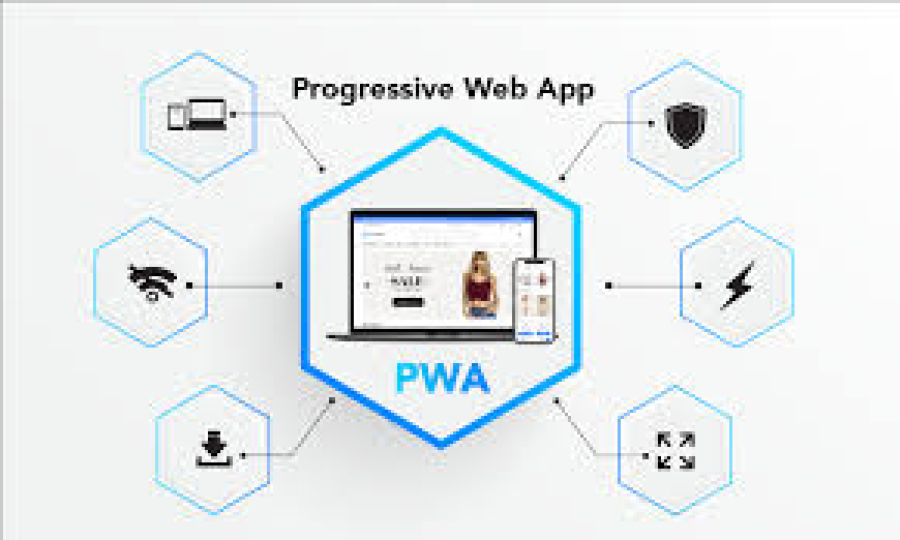How to Use Laravel Livewire for Interactive Web Pages
In modern web development, creating interactive and dynamic user interfaces is more essential than ever. While JavaScript frameworks like Vue.js and React are popular, not every freelancer or backend developer wants to shift entirely into front-end territory. That’s where Laravel Livewire steps in — a powerful tool that lets you build reactive, dynamic interfaces using plain PHP. On freelancerbridge, our goal is to simplify development for freelancers, and Livewire is a perfect example of writing less JavaScript without sacrificing interactivity. Whether you're creating dashboards, real-time forms, or search components, Laravel Livewire helps you build seamless user experiences quickly and efficiently.
✅ Long Description
🌐 1. What is Laravel Livewire and Why is it Revolutionary?
Laravel Livewire is a full-stack framework for Laravel that enables you to build interactive UIs using PHP alone — no need for Vue.js or complex JavaScript.
Why it matters for freelancers:
Reduces learning curve for backend developers
Speeds up development by keeping logic in PHP
Perfect for creating real-time user interfaces
It combines the best of both worlds: Blade templating and modern reactivity.
⚙️ 2. How Livewire Works Without JavaScript
Livewire works by sending AJAX requests whenever a user interacts with a component (like clicking a button or typing into a field). It then rerenders the changed part of the DOM on the server and returns the updated HTML to the client.
This means:
No manual JavaScript handling
Seamless data binding
Cleaner codebase maintained in one language
📌 3. Ideal Use Cases for Laravel Livewire
Freelancers working on client projects can benefit from Livewire in many real-world scenarios:
Real-time search bars
Dynamic form inputs
User dashboards
Notifications and alert components
File uploads with progress bars
Comment sections and chat systems
Using Livewire saves time and reduces reliance on front-end libraries.
🧩 4. Benefits of Using Laravel Livewire in 2025
In today’s Laravel ecosystem, Livewire is more mature and feature-rich than ever. Here are some of the key benefits:
Minimal JavaScript: Write powerful features without touching JS.
Tight Laravel Integration: Leverages models, validation, routing, and policies.
Fast Prototyping: Build complex UI components quickly.
Reusable Components: Create modular, testable components.
This is particularly helpful for freelancers who juggle multiple projects with limited resources.
🔍 5. Key Features Freelancers Love in Livewire
Real-time validation – Form fields update as the user types.
Debounce control – Control when data updates for optimal performance.
File uploads – Upload images or documents with ease.
Polling and events – Build live dashboards or data tables.
Alpine.js compatibility – Add minimal JS for enhanced UI control.
🧠 6. Why Livewire is Great for Laravel Beginners
Freelancers who are just getting started with Laravel will find Livewire to be:
Beginner-friendly and intuitive
Ideal for full-stack Laravel apps
Easier than learning a separate front-end framework
If you're building CRUD apps or admin panels, Livewire speeds up everything from start to finish.
🛠️ 7. How Livewire Fits into the Laravel Ecosystem
Livewire works seamlessly with:
Blade Templates – You can mix Livewire components with Blade syntax.
Eloquent Models – Use Laravel models directly inside your components.
Validation Rules – Apply Laravel validation just like you would in controllers.
Auth & Middleware – Protect your Livewire components with standard Laravel guards.
Everything stays consistent — and that means more productivity for freelancers.
⚡ 8. Performance Considerations in Livewire
Some developers worry that Livewire might be slower than client-side JavaScript frameworks. However, in 2025:
Livewire has significant performance improvements
DOM diffing is faster and more accurate
Lazy loading and pagination enhance speed for large datasets
Freelancer Tip: Use wire:key, lazy components, and loading indicators for optimized UX.
📲 9. Using Livewire with Mobile-Responsive Designs
If your freelance work includes mobile-first designs, Livewire supports:
Integration with responsive CSS frameworks like Tailwind CSS or Bootstrap
Adaptive UI elements that respond to user interactions
Alpine.js for lightweight front-end enhancements
Mobile-friendly interactive interfaces are now easier than ever.
🔄 10. When to Use (or Not Use) Livewire
Use Livewire when:
You’re building admin dashboards or content management tools.
You need real-time interactivity but want to avoid JS frameworks.
You want to prototype Laravel apps quickly.
Avoid Livewire when:
Your app is extremely JS-heavy (e.g., full-scale SPAs)
You’re building something that requires WebSocket-based live updates (consider Laravel Echo)
Choosing the right tool helps avoid unnecessary refactoring later.
💼 11. Client Satisfaction with Livewire Projects
Freelance clients love:
Faster delivery times
Lower development costs (no separate front-end)
Easy-to-understand code for future maintenance
Secure backend-first structure
Livewire can be your secret tool for exceeding client expectations while maintaining clean code practices.
📊 12. Real-World Freelancing Examples Using Livewire
Examples where Livewire excels for freelance projects:
Live inventory dashboards
Real-time bidding or auction pages
Invoicing and billing modules
Job posting and filtering interfaces
User profile editors with instant feedback
These projects often come up in freelancing gigs and Livewire reduces delivery time significantly.
🔒 13. Security and Best Practices
Validate all inputs using Laravel’s built-in rules.
Use middleware to guard access.
Limit what gets exposed from the component class.
Avoid overfetching data in large components.
Following these practices keeps your application fast and secure.
📈 14. Future of Livewire in Laravel Development
Livewire is not a temporary trend — it is part of Laravel’s core philosophy for building full-stack apps. With continued updates, official support, and community packages, Livewire is only becoming more powerful.
Freelancers who learn it in 2025 will remain in high demand for building modern, interactive, and lightweight web solutions.


 by Emily
by Emily




